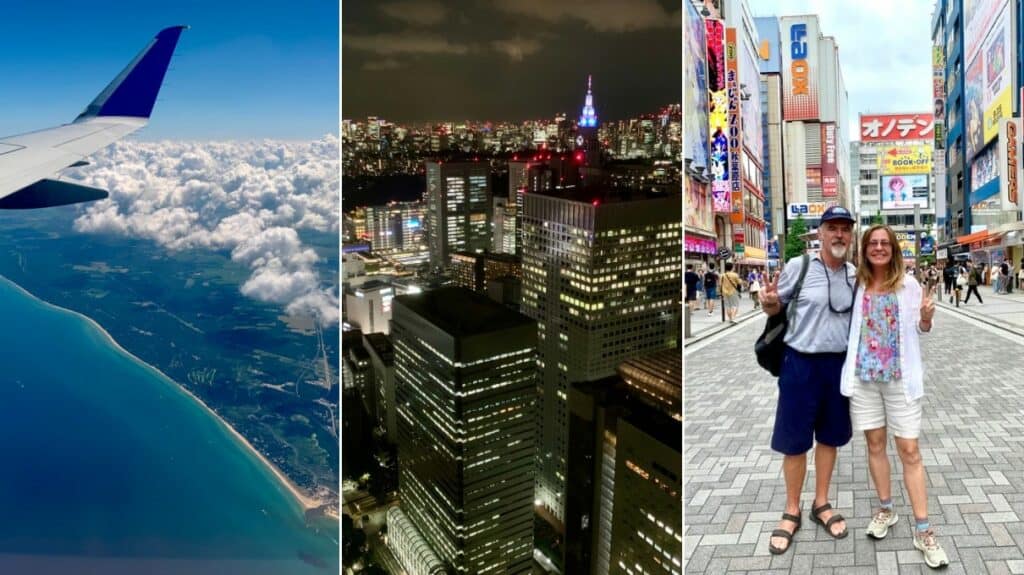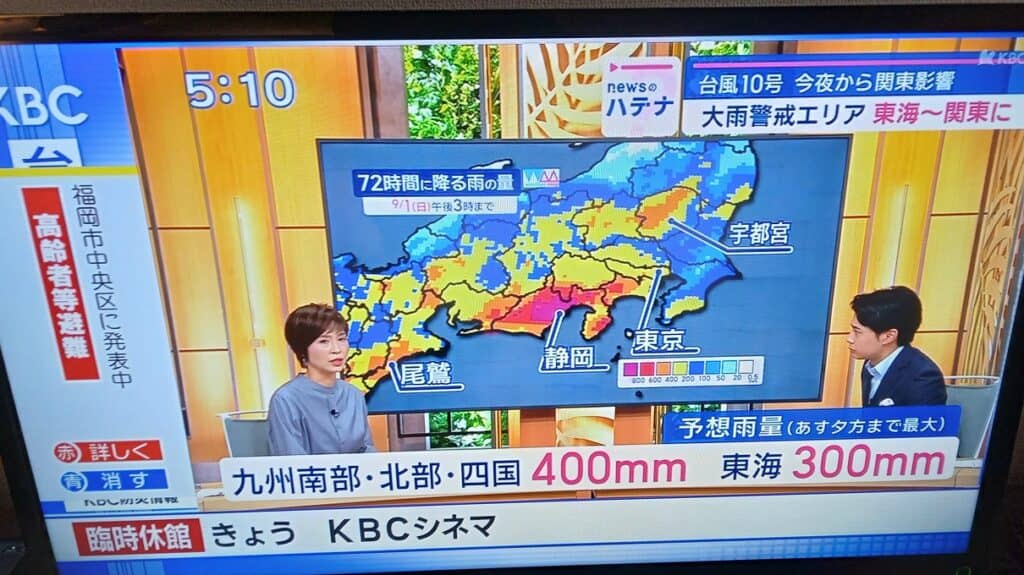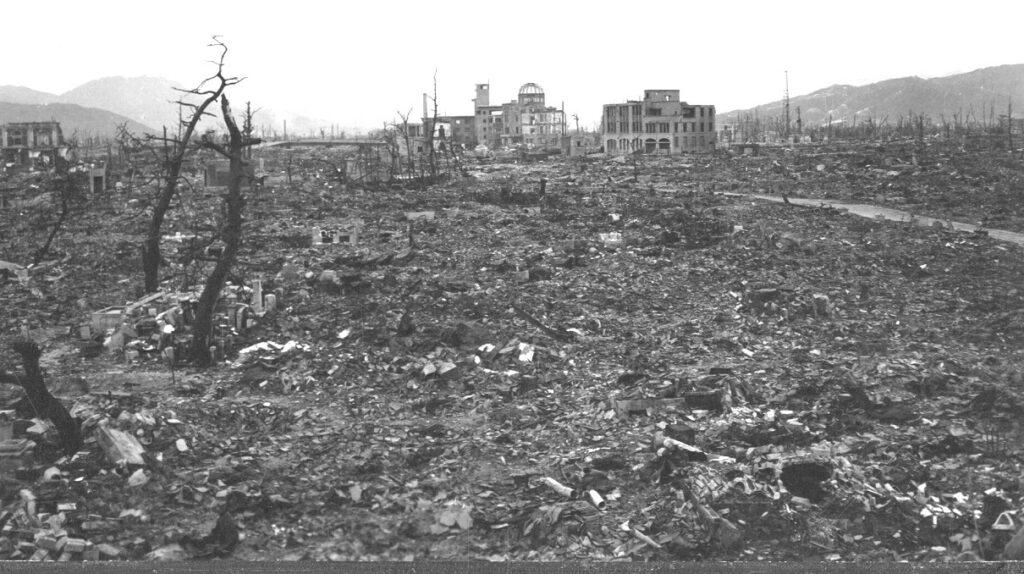I have a Hiroshima hangover. More accurately, a heavy Hiroshima heartache.
Just over a week ago our slow travel summer tour of Japan brought the wife and I to Hiroshima — the city renowned as the first place a nuclear weapon was used.
August 6, 1945, 8:15 a.m. That was the moment the United States of America detonated an atomic bomb in the air above the center of Hiroshima – a city of 350,000 at the time.
As many as 70,000 people died that day in the blast which scorched an area five kilometers in diameter with heat of up to 7,000 degrees Fahrenheit. It’s estimated another 70,000 souls perished in the days, weeks, and months thereafter from injuries and radiation exposure.
Of course, as an American, I learned of this general history in grade school. But as a kid, it’s abstract information — something old, irrelevant, and easily ignored. Now after spending a week in Hiroshima, I will never forget the countless horrific details we learned during our gut wrenching stay.
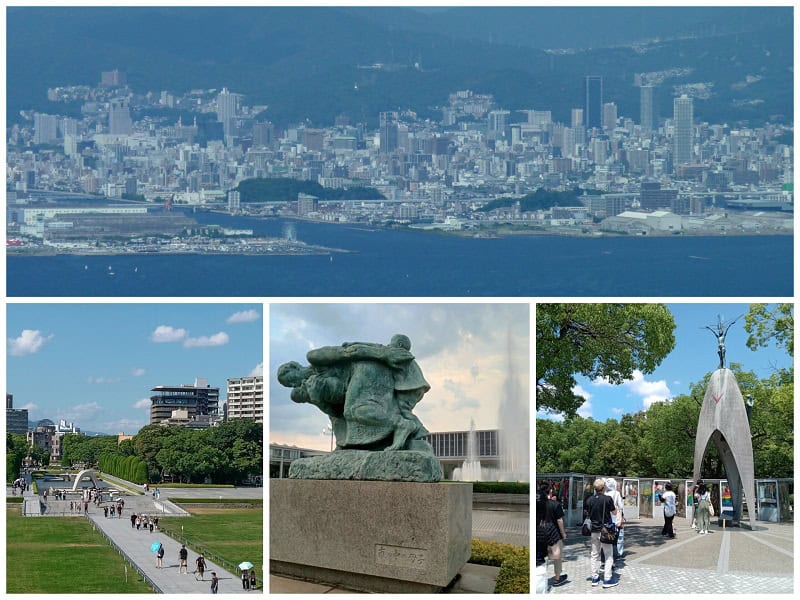
I’m actually writing this with the Hiroshima skyline in the distance. We’ve moved 15 miles down the coastline. From our current balcony, the modern skyscrapers sparkle in the sunlight. The surrounding sea and mountains and rivers and puffy white clouds make it look so beautiful, so peaceful. I needed to see Hiroshima like this. A week at ground zero was too depressing.
To be clear, the Hiroshima city center is truly beautiful today. It’s hard to believe such a thriving, modern metropolis has grown up around the bomb site. The huge, manicured “Hiroshima Memorial Peace Park” occupies the triangle of land that was the vaporized commercial center in 1945. The Peace Memorial Museum is there and dozens of memorials and monuments.
All of the accompanying exhibits and displays are extremely moving. Some are very graphic! The devastation caused by a nuclear weapon on a civil population is impossible to sanitize.
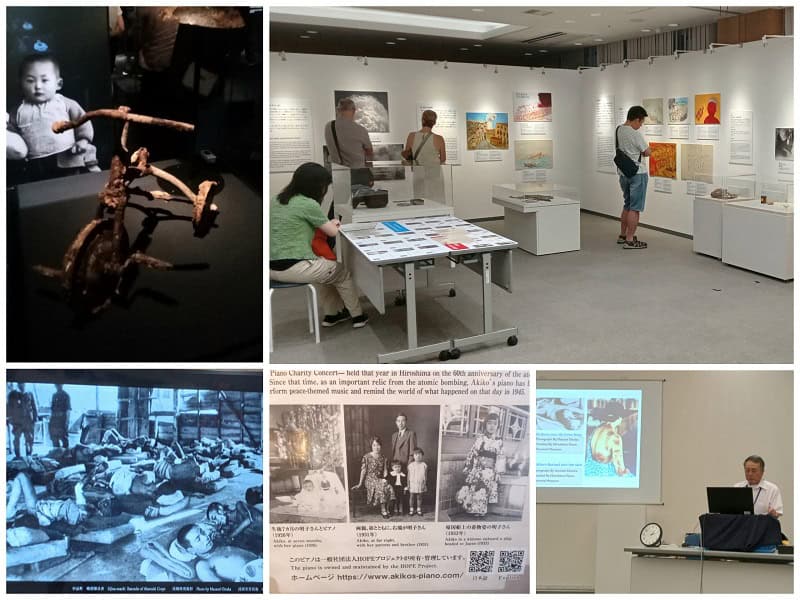
Inside the museum, lecture halls, and theaters can be heard the ghastly personal stories of victims, families, children, injuries, deaths, long-term health effects. These too are related in sometimes gruesome detail with words, pictures, and historic materials. Survivors and next generation family members give testimony in-person, on video, even using AI.
What I found most distressing: reading about the last moments of pictured children’s lives while looking at the actual shredded, burned, and bloodstained clothing they were wearing on that day in 1945.
At one point I wondered: who killed more children — the USA with the Hiroshima A-bomb? Or Israel in its current war against Hamas? How absolutely sickening! God help us all. (I know, Hamas terrorists killed 38 Israeli minors in the October 7, 2023 terror attack.)
Of course, the “Atomic Bomb Dome” is part of the Peace Memorial Park too, the instantly recognizable symbol of Hiroshima and the atomic bombing. I couldn’t take my eyes off it the first time I saw it — on our first night. I shed tears. So haunting. So somber. So sad. I took hundreds of photos. I still can’t stop thinking about it.
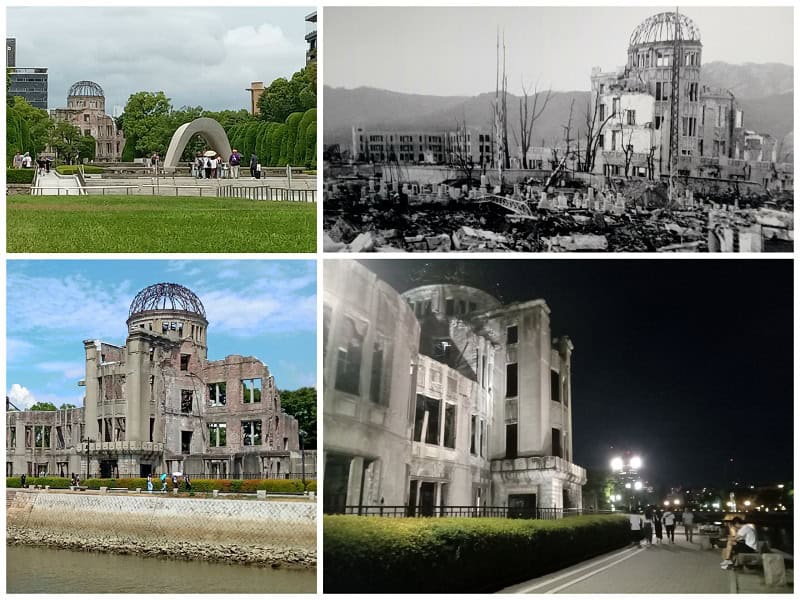
We ended up every day at the Peace Park, often sitting and staring at the Dome (in 1945, it was the Hiroshima Prefecture Industrial Promotion Hall); meditating, praying, contemplating humanity, warfare, weapons, and our warped world.
Our Airbnb unit was located 400 meters from the Atomic Bomb Dome. The property rebuilt on the ashes of history. A nearby school made with reinforced concrete (rare in 1945) survived the atomic blast. The 400 elementary students inside died instantly. My wife Ellen has already posted here about her ‘special’ experience at our rental.
I can definitely feel a vibe of sorrow and anguish here in Hiroshima. Something similar to what I felt in Sarajevo, Bosnia and Herzegovina. A feeling I get at military cemeteries. At Gettysburg. It’s been a difficult and emotional week for both Ellen and myself. Still, this place and its lesson shouldn’t be missed by anyone.
Despite the history of destruction and death and generations of pain and torment, Hiroshima and its people have one message to the world: nuclear weapons should never be used again and should be abolished.
The Hiroshima Peace Memorial and all its elements serve this one lofty goal. We got the message. But is the world listening?
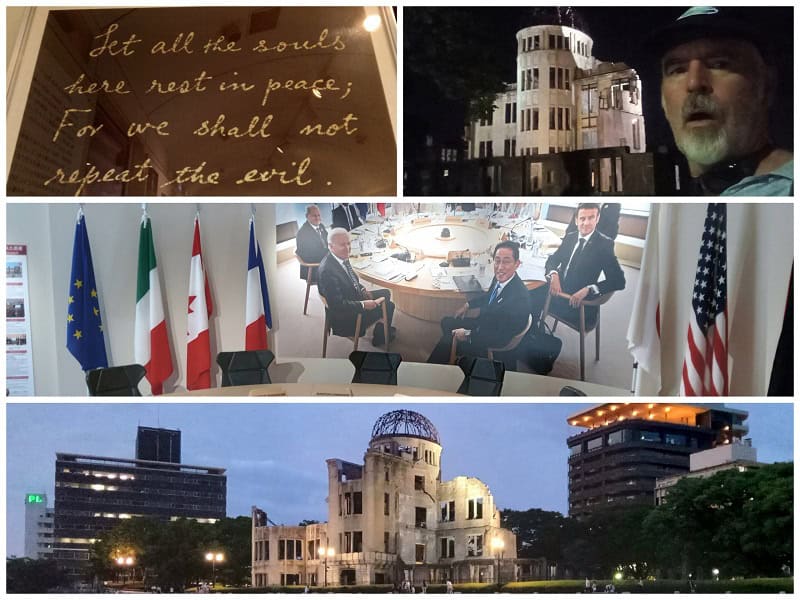
In May 2023, Hiroshima hosted the annual G7 summit where the world’s leaders promised to “strengthen disarmament and non-proliferation efforts toward the ultimate goal of a world without nuclear weapons with undiminished security for all.”
And while it is true that the number of deployed nuclear weapons has decreased from more than 70,000 during the ‘cold war’ to about 12,500 today, countries possessing such weapons are modernizing their stockpiles. And all remain committed to the ‘doctrine of nuclear deterrence’ as a security policy.
Obviously there remains much work to be done. Which is why the city and survivors of Hiroshima say it is so important to keep telling their story – including the graphic and heartbreaking details.
As always, be thankful and generous, happy trails & more beer.
Life is NOW!
Thanks for reading, “Hiroshima heartache.”
About Theo
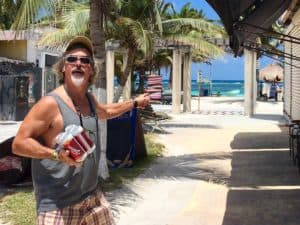
Tedly (Theo) retired early from the news business to wander the planet with wife Ellen. He enjoys exploring all Earth has to offer: jungles and beaches, volcanoes and deserts – always drinking beer along the way.
Other posts about Japan:
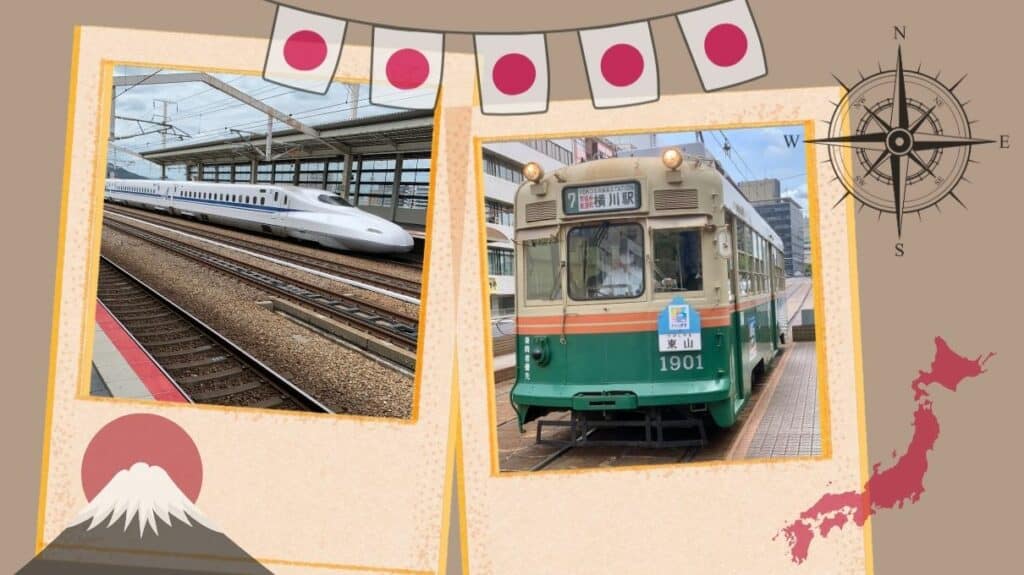
Budget breakdown: Travel in Japan
Ellen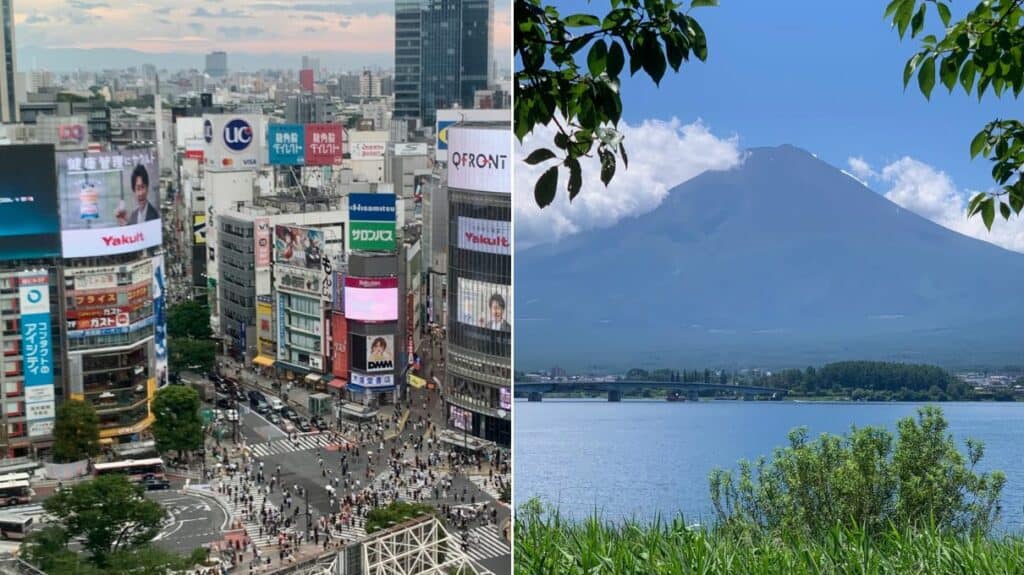
What our entertainment cost in Tokyo & Mount Fuji
Ellen